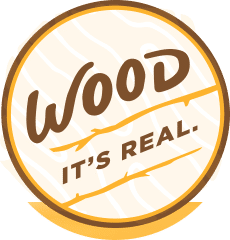
Everything You Need to Know About Pine Flooring
Southern Yellow Pine flooring has long been one of the most popular choices for residential and commercial spaces. Thanks in large part to its durability, this type of flooring has the potential to last for generations. Whether you’re wanting to install your own pinewood floors or you want to hire a skilled professional to handle the installation for you, find out everything that you need to know about this historically popular type of flooring today.
Common Flooring Terms
Before we dive into the benefits of pine floors and how to install them yourself, it’s a good idea to become familiar with some of the terminology that you’re likely to hear.
- Clear Wood: This term refers to wood flooring that is completely or practically free of blemishes.
- Heart Content: Higher heartwood content points to tighter grains and stronger wood.
- Kiln Dried: Before the wood gets to your house, it’s dried in a kiln to remove moisture. You should look for floors with less than 10% moisture content.
- Knot Content: This refers to how many knots are in a single piece of wood and how large they are.
- Tongue and Groove: Tongue and groove floors are a type of floor that has an edge on one side of a plank that fits into the groove of the next piece, allowing the pieces to go together like a puzzle.
- Wide Plank: If a single plank of floor is wider than 3”, it’s considered wide plank.
Choosing the Right Type of Pine Flooring
There are a variety of options when it comes to pine floors, so you’ll want to make an informed decision. While many types of pine floors are considered “softwood flooring”, Southern Yellow Pine (SYP) provides the best of both worlds. Possessing some of the positive traits of other types of pine, such as the ability to take a stain, Southern Yellow Pine also has a lot of character. Depending on the overall design aesthetic that you’re looking for, it can provide the perfect look. Most importantly, SYP is incredibly durable, with the potential to last for more than 100 years with proper care. When you choose this species of pine, you should be able to enjoy it for a lifetime.

How to Stain Pine Floors
If you allow someone else to install your floors, you may still choose to stain the floor yourself. It’s important to remember that even though Southern Yellow Pine is a harder variety of pine, it’s still considered softwood flooring. This means that it takes stain differently than oak. Darker stains do a better job of showing contrast. This means that vertical grain pines can often look like exotic hardwoods with a dark stain. Tighter grains absorb less stain than open grains, so if you want an even stain, you may want to seal the surface first.
Once you settle on a stain color, make sure that your planks are dried and acclimated. This process usually takes a week or two. When your planks are in place, you’re ready to apply your stain. Be sure to start with a thin, single coat of stain that gets evenly applied to every plank, This will ensure that you can spot any areas that may need more stain due to the nature of the grain.
How to Install Pine Flooring
Installing pine floors is a job that you can also choose to do yourself. Not only does this allow you to experience the sense of accomplishment that comes with completing a DIY task, but it also allows you to take more control over how the finished product looks.
If you are thinking about installing pine flooring, good choice! Southern Yellow Pine is easy to work with and brings tons of natural charm and beauty to your space. Like all wood flooring, some wear and tear can be expected. SYP is a softwood, not a hardwood so denting and scratching may occur but can be repaired. You can read more information through the Today’s Homeowner guide here on what you can expect from your new floors. Once installed, apply a good finish, add felt pads under furniture, and don’t stress the scuffs. They are a part of the story of your home. Pine floors wear in, not out!
For more detailed instructions on installing we recommend the Family Handyman guide here.

Embracing the Power of Pine
Choosing Southern Yellow Pine for your floor is a great way to beautify your home with a material that you can trust to last a lifetime. Thanks to its ease of installation, natural beauty, and minimal environmental impact, it continues to be one of the most popular options for those who are installing pine floors in their home.





